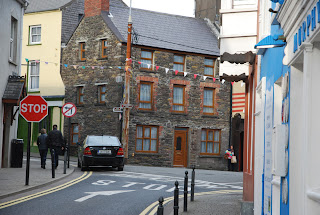The latter half of May 2012, my crack traveling companion Kit and I decided to do our own tour of the Republic of Ireland, with me driving and her navigating. I'd gotten a week's practice driving on the wrong side of the road last fall in South Africa, so all I had to get used to in Ireland was roads about the width of a king-size bed with two-way traffic...
Just a reminder here that you can click any photograph to see it larger, and at the bottom of the page, click "Older Posts" to keep going through the trip in order.
We arrived in Shannon at the break of dawn, loaded up our wee rental car, and headed up through the Burren toward Galway. The Burren is a wild and rocky place, almost nothing that passes for soil and a wind that won't quit.
Despite the rocky barreness of the place, some tough vegetation manages to keep a toehold there:
Just a reminder here that you can click any photograph to see it larger, and at the bottom of the page, click "Older Posts" to keep going through the trip in order.
We arrived in Shannon at the break of dawn, loaded up our wee rental car, and headed up through the Burren toward Galway. The Burren is a wild and rocky place, almost nothing that passes for soil and a wind that won't quit.
Despite the rocky barreness of the place, some tough vegetation manages to keep a toehold there:




















































